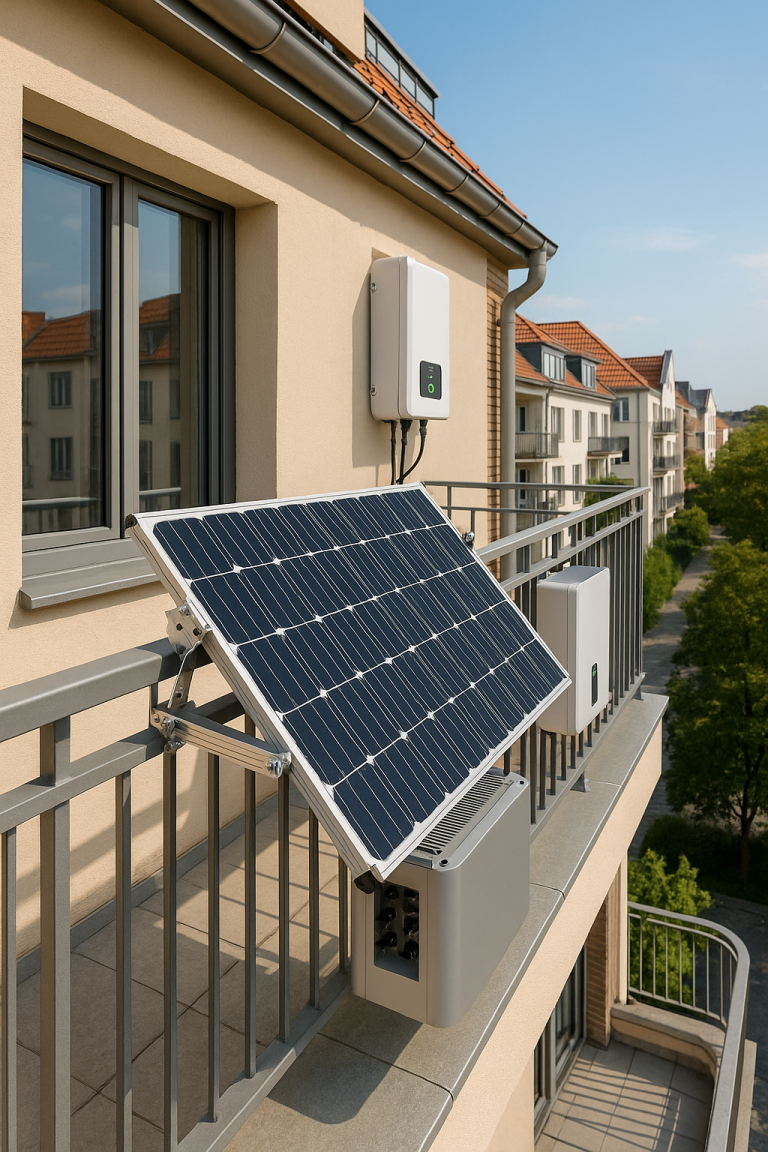1. Introduction: Why Charge Controllers Matter in Solar Systems
In any solar setup, especially off-grid or hybrid systems, the charge controller plays a crucial role. It’s responsible for regulating the voltage and current coming from the solar panels to safely charge the battery. Two major types dominate the market: PWM (Pulse Width Modulation) and MPPT (Maximum Power Point Tracking).
While PWM is cheaper and simpler, MPPT can boost system efficiency by up to 30%, especially under partial shade, cold temperatures, or when panel voltages exceed battery voltages—a common situation across many European installations.
2. What Is an MPPT Controller and How Does It Work?
MPPT is an advanced technology that constantly tracks the optimal voltage and current to extract the maximum power available from a solar panel.
Instead of forcing the panel to operate at battery voltage (as PWM does), MPPT adjusts the load so the panel always operates at its Maximum Power Point, converting excess voltage into usable current through DC-DC conversion.
Key Advantages:
- Improves efficiency by 20–30%
- Performs well in variable weather (e.g. cloud cover)
- Allows use of higher-voltage panels with lower-voltage batteries
- Works with LiFePO₄ and lithium-ion battery banks
?External Reference
3. MPPT vs PWM: Key Differences
Here’s a clear comparison between PWM and MPPT charge controllers:
| Feature | MPPT Controller | PWM Controller |
|---|---|---|
| Efficiency Gain | 20–30% more energy yield | Baseline, 70–80% efficiency |
| Voltage Flexibility | Supports high-voltage PV input | Limited to battery voltage |
| Partial Shade Handling | Excellent, dynamically adjusts | Poor – fixed voltage limits output |
| System Compatibility | Ideal for large or hybrid systems | Best for small, consistent sunlight sites |
| Price | Higher upfront, better long-term savings | Low-cost, less efficient |
4. When Should You Use MPPT in a Solar System?
MPPT controllers are recommended if:
- Your solar panel voltage is much higher than your battery bank
- You operate in areas with frequent cloud coverage or temperature swings
- You’re using LiFePO₄ or deep-cycle batteries that require precise charging
- You have an off-grid or hybrid solar system over 400W
?Internal Link Suggestion
For detailed battery selection, see
5kWh vs 10kWh Solar Battery Systems – How to Choose for Your Needs?
5. Real-World Example: MPPT in a European Climate
In a test installation in Germany with a 1.5kW system:
- A PWM controller delivered ~950Wh/day
- An MPPT controller delivered ~1.25kWh/day
Performance improvement: 31.5%
In this case, the MPPT controller:
- Allowed higher input voltage during cloudy hours
- Reduced generator runtime by 40%
- Kept the battery above 60% SoC during winter months
6. Choosing the Right MPPT Controller: What to Look For
✔️ Must-Have Features:
- Wide PV input range (e.g. 18–100V)
- High conversion efficiency (≥98%)
- Battery type selection (LiFePO₄, AGM, gel, etc.)
- Overvoltage, overcharge, and short-circuit protection
- Real-time monitoring (Bluetooth, mobile app, or LCD)
Some premium models offer:
- Load output terminals
- USB charging ports
- Dual battery bank support
7. Cost vs ROI: Is MPPT Worth the Investment?
Yes—particularly for larger systems, variable climates, or battery-based storage. While MPPT controllers cost €150–€400 (vs €50–€150 for PWM), they:
- Extend battery lifespan (less over/undercharging)
- Shorten battery charge time
- Increase system output
Example ROI:
- Cost: €250
- Extra energy per day: 1.5kWh
- Annual gain: ~540kWh
- Electricity value (EU avg.): ~€180/year
- Payback: ~1.5 years
8. Conclusion: Maximize Every Ray of Sunlight
Upgrading to an MPPT controller is one of the simplest and smartest ways to boost the performance of any solar system. Whether you’re powering an apartment balcony kit or an off-grid mountain cabin, MPPT ensures you get the most energy per square meter of solar panel installed.
Combine with LiFePO₄ batteries and smart inverters, and your system becomes future-ready for energy independence.
? Internal Link Suggestion: Learn more about battery chemistry in




